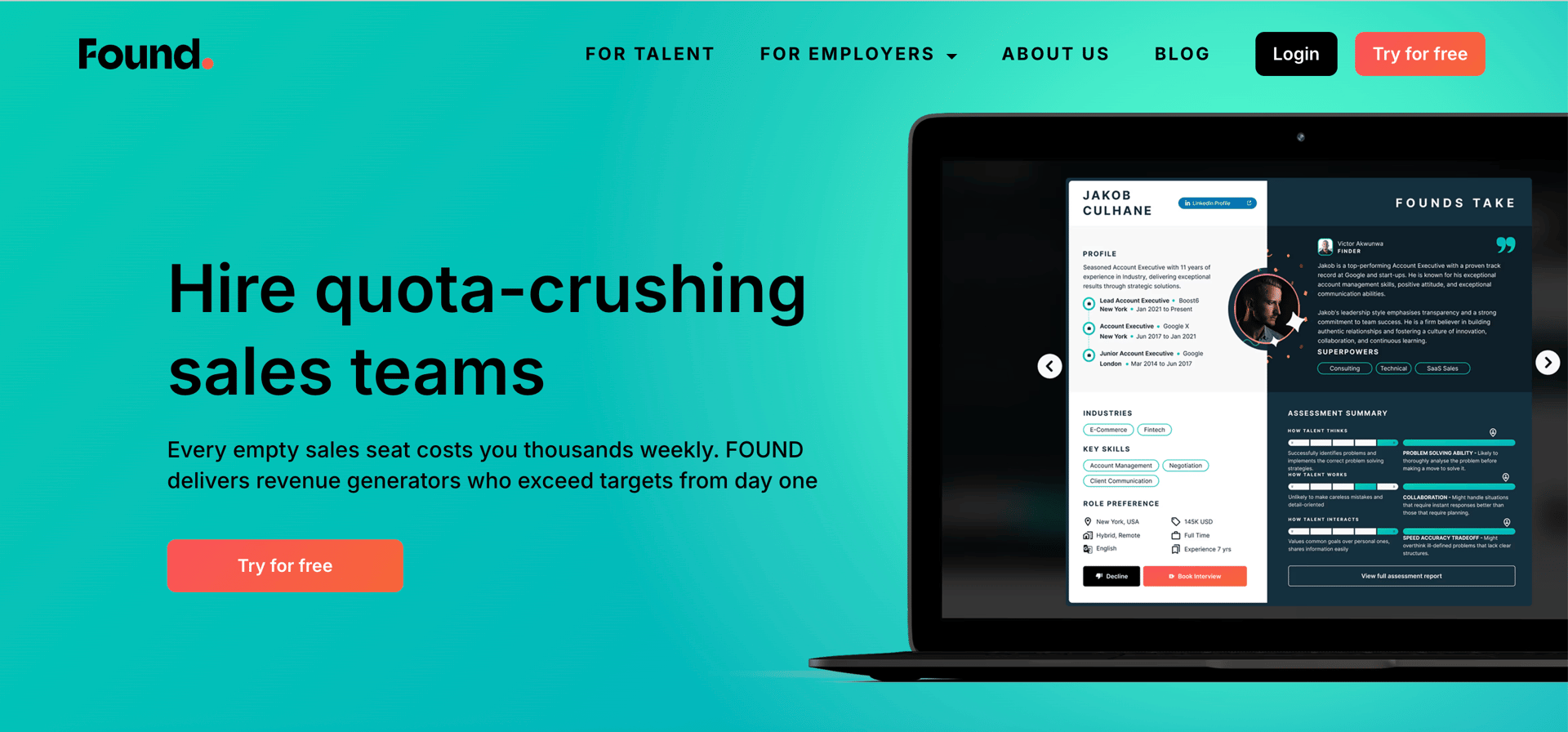
Reverse Recruiting MVP
Launched FOUND Reverse-Recruitment MVP to validate the Product-Market Fit.
Context
When I joined GetFound.io as Interim CPO, the startup had a bold vision: reverse the hiring process. Instead of candidates applying to companies, employers would pitch directly to talent. The idea resonated with a hard-to-reach segment: Product Managers and Tech Sales professionals in Zurich, but there was a problem: the team had no traction.
They had launched a basic landing page, spent money on Meta and LinkedIn ads, but conversion rates were below benchmarks. Candidates weren’t signing up, companies weren’t engaging, and the funnel was broken. Without traction, there was no way to validate the model, and no way to raise the funding round they were aiming for.
My role was clear: get from zero traction to a validated MVP, fast.


Problem Space
Hiring top talent in Switzerland’s tech ecosystem was broken.
For talent:
Mid–senior professionals in product and tech sales were frustrated by the hiring process :
Submitting endless applications into a void.
Salary information is hidden until the late stages.
Time wasted on irrelevant interviews.
For employers:
Swiss startups and scaleups struggled to fill critical roles. They faced:
High fees from recruiting agencies.
Unqualified or irrelevant candidates from job boards.
Slow, inefficient hiring cycles.
The pain was clear: the market was inefficient on both sides. Candidates wanted efficiency and transparency, while companies needed access to scarce, vetted talent.
This created the opportunity to flip the model: instead of talent chasing companies, companies would pitch directly to talent.
Discovery
When I joined, we didn’t want to build features blindly, the first step was to listen deeply to both sides of the marketplace.

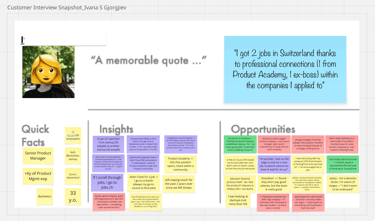
Through interviews with mid–senior Product Managers and tech sales professionals in Switzerland, we uncovered a recurring theme: most were already employed and not actively applying, yet still open to new opportunities.
Their frustrations were clear:
Endless job applications with little response.
Salary ranges are hidden until late in the process.
Interviews that felt like a waste of time.
What they wanted instead was efficiency, transparency, and control, a process where companies came to them, not the other way around.

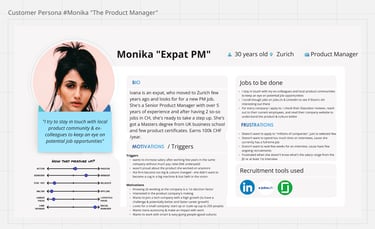
Employer side:
Talent side:

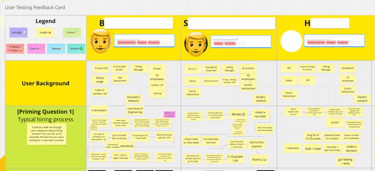
On the other side, Swiss tech startups and scaleups shared their struggles. Recruiting agencies were costly, job boards delivered unqualified leads, and the hiring process felt slow and inefficient. Employers were open to alternatives if they could:
Access quality, vetted talent they couldn’t normally reach.
Reduce dependency on expensive agencies.
Speed up hiring without compromising quality.


Framing the problem:
From these conversations, we mapped the riskiest assumptions :
Would talent actually sign up for a reverse-recruitment model?
Would employers really “pitch” themselves to candidates?
Could we ask talent to complete assessments without losing them?
These insights set the foundation for our MVP strategy and shaped how we designed, tested, and iterated every step of the funnel.
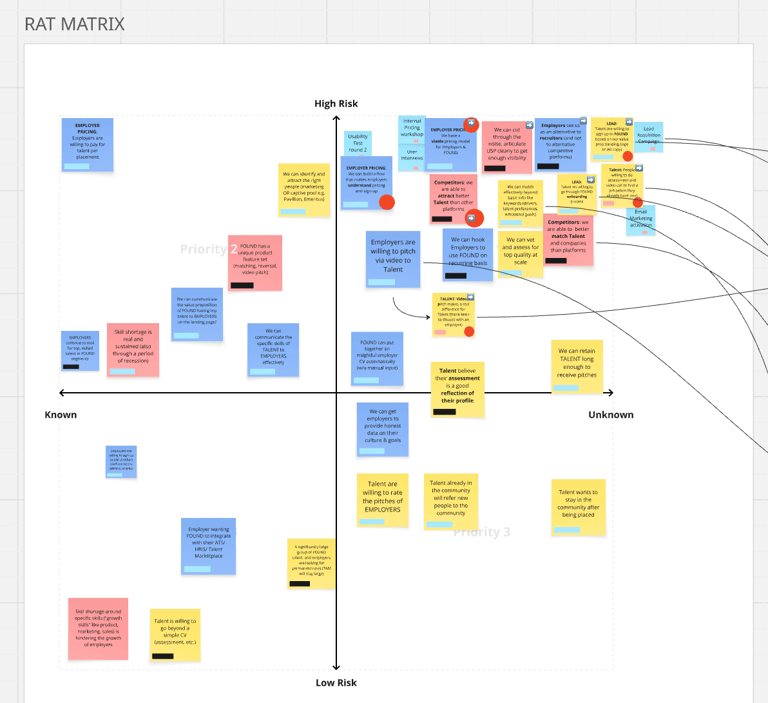

Testing and Failing Fast
Once the personas and assumptions were mapped, the priority was to test quickly and learn even quicker.
Competitor ads review:
To understand market positioning, I analysed competitor ads and landing pages. Their messaging leaned heavily on speed and being chosen. These insights shaped our own value proposition, copy and helped us create our unique selling point messaging.
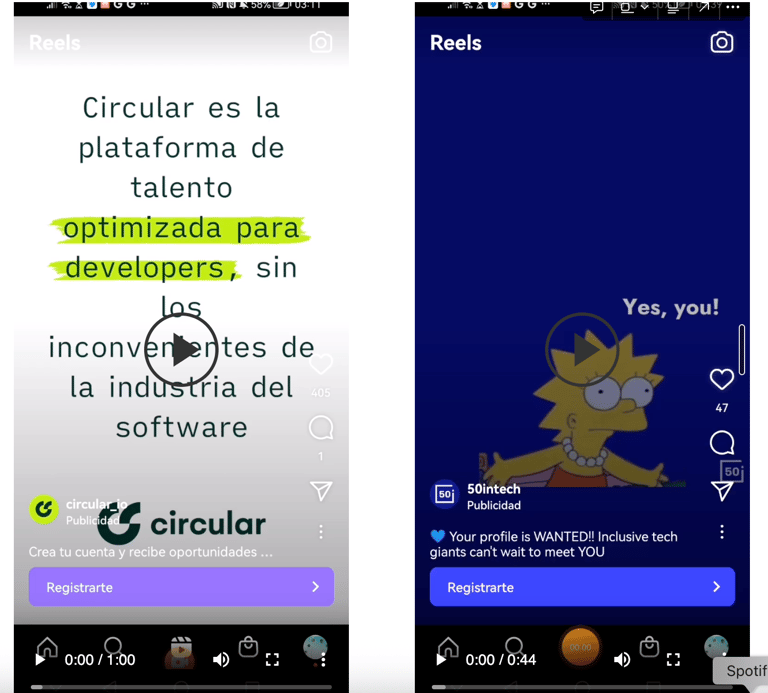

Landing pages & ads:
We first built Webflow landing pages and launched Meta and LinkedIn ads. The goal: test whether passive talent would sign up directly. The results were disappointing (CTR <1%, CVR ~1.7%). The learning: unlike active job seekers, passive talent simply doesn’t convert through ads. It confirmed that acquisition through paid channels wasn’t the right lever for our audience.
The Takeaway:
The next step was clear: we needed to rethink how to reach and onboard passive talent.

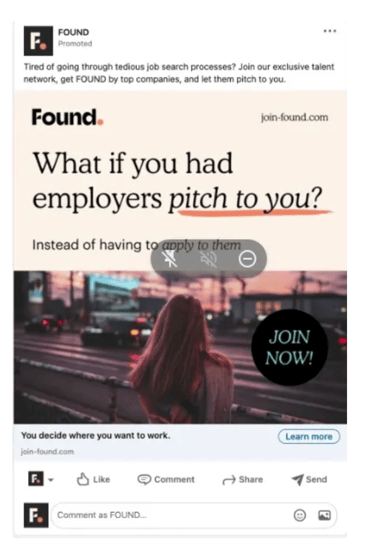
With ads underperforming, we had to rethink acquisition from the ground up. Our target users, employed, passive talents, were not hanging out on job boards or clicking paid ads. To reach them, we pivoted to outbound automation, leveraging no‑code tools to scale without engineers.
How we built the engine:
Targeting (LinkedIn Sales Navigator): We hand‑picked Product Managers and Tech Sales profiles in Zurich.
Outreach (La Growth Machine): Automated, sequenced LinkedIn invites and follow‑ups, sent from the CEO’s account to keep it personal.
Landing → WhatsApp (Webflow + ManyChat): Instead of lengthy forms, talent was redirected to WhatsApp. There, a ManyChat bot qualified leads with light‑touch questions (role, experience, openness to new opportunities).
Assessment & vetting (Equalture + Calendly): Qualified talent received an online assessment and booked a short vetting call. Calls doubled as discovery sessions, feeding insights back into onboarding design.
Profile creation (Make): With user consent, we scraped LinkedIn data to auto‑generate candidate profiles, eliminating friction from manual CV entry.
Why this mattered:
This funnel was entirely orchestrated in Make, giving us a scalable, measurable process with zero engineering effort. It allowed us to:
Reach passive talent where they were active (LinkedIn).
Replace high‑dropoff forms with a conversational WhatsApp flow.
Automate vetting and onboarding at scale while preserving a human touch at key steps.
This pivot turned acquisition from a dead‑end into a predictable engine, the foundation for proving marketplace liquidity.
Pivot: Automated Growth Acquisition
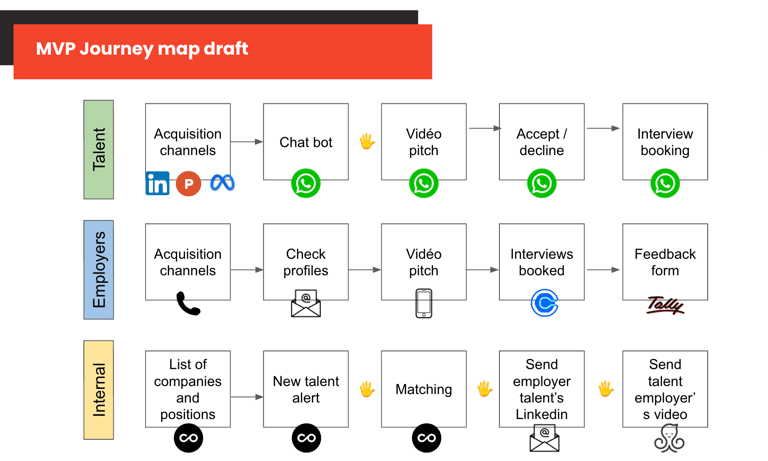

Concierge MVP: Testing the End-to-End Funnel
With talent onboarded, we needed to validate the other side. Instead of building the matching algorithm upfront, we ran a concierge MVP: manually introducing vetted talent to companies, facilitating pitches, and tracking placement outcomes.
This was the real test: could we take users from LinkedIn outreach all the way to a signed placement? Within weeks, we proved we could.
Results
Hundreds vetted users onboarded via automated funnel.
Onboarding conversion >70% with WhatsApp replacing forms.
84% of assessments completed, despite talent already being employed.
First placements closed, proving employers would pitch, and pay.
The market validation and traction were instrumental for the CHF 2.2M fundraising round.
Lessons Learned
Discovery before scaling. Interviews shaped personas, clarified pain points, and told us where to focus. We learned that talents don't behave like active job seekers, ads fail, and outreach works.
Automation > scale: with no-code tools, we scaled onboarding, vetting, and profile creation without writing a line of code.
Running a concierge MVP was the fastest way to validate a two-sided marketplace.
Why It Matters
This case wasn’t about shipping features. It was about applying product thinking under pressure: listening to users, framing assumptions, testing fast, and pivoting based on evidence.
As Interim CPO, I helped FOUND move from a broken funnel and zero traction to a validated MVP, early placements thanks to smart discovery, no-code experimentation, and relentless focus on outcomes.
Connect
Links
© 2025. All rights reserved.